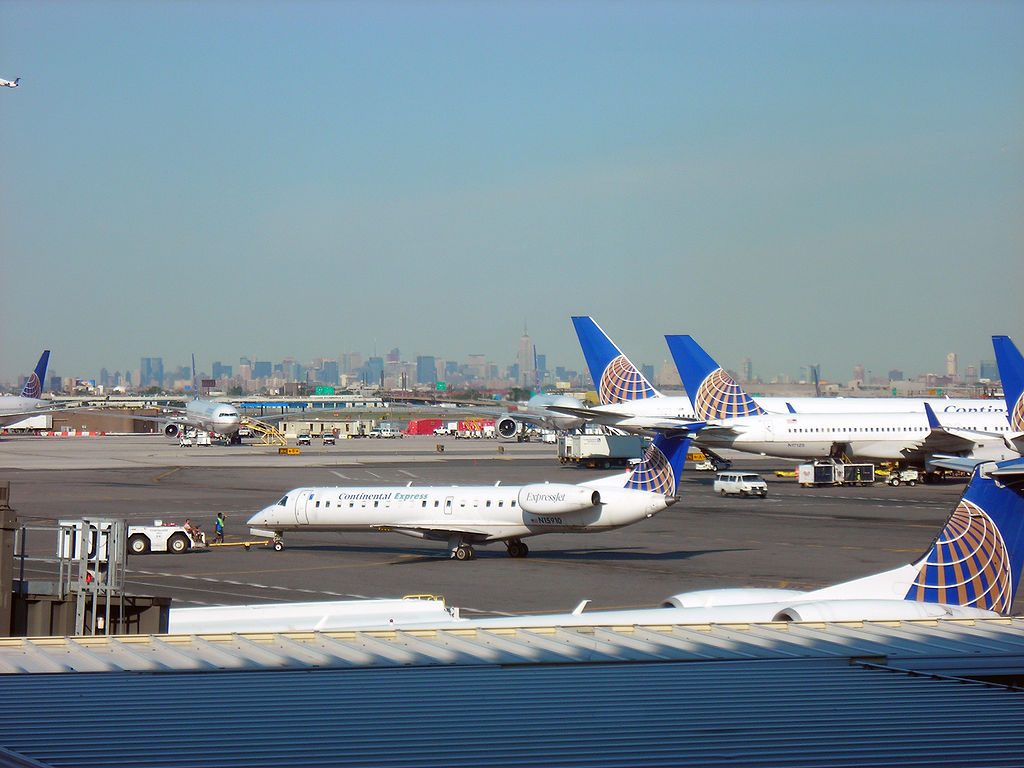Back

Blog
Multi-Billion Dollar Transportation Investment Set to Strengthen Newark Economy

Written by Amanda Maher. Photo by Nikon via Wikimedia Commons.
It took a contentious, four-hour meeting to cross the finish line, but the Port Authority of New York and New Jersey board finally voted in favor of a multi-billion dollar capital spending plan that will result in a new terminal at LaGuardia Airport, a redeveloped terminal at Newark Liberty International Airport and a new central bus terminal in Midtown Manhattan.
The impacts of these investments on the Newark economy cannot be overstated.
The capital plan calls for a $2.3 billion redevelopment of Newark Liberty’s Terminal A, which was first constructed in 1973 and has seen few improvements since. Right now, the terminal has limited roadway frontage and airside capacity; its building systems are aging and it cannot withstand the airport’s continued passenger growth. Last year, the airport served a record 37.5 million total passengers and demand is expected to increase another 50 percent over the next two decades.
Redevelopment of Terminal A will include the construction of a new 980,000 square foot, 33-gate terminal (expandable to 45 gates), 144 acres of associated airfield work, a new roadway system and a 3,000-space parking garage and toll plaza.
“The Port Authority’s airports are critical to the region’s economic growth and the region deserves modern airports that can meet the demands of the 21st century economy,” Port Authority Vice Chairman Scott Rechler said prior to the board vote.
The new facilities will improve the airport’s ability to accommodate modern airline fleets, meet future passenger demand, reduce delays and provide the customer services and amenities that travelers – particularly international business travelers – have become accustomed to.
Overall, the Terminal A project is expected to generate 9,000 job-years (or years of one job), $600 million in wages and $3.3 billion in economic activity over the life of the project.
The Midtown Manhattan bus terminal is also a major win for New Jersey residents.
Siting the new facility caused contention between some New York and New Jersey politicians, with many New York officials urging the Port Authority to locate the facility in New Jersey, which would be less expensive, and New Jersey officials arguing that the Port Authority should retain its New York City location, reducing commuter transfers. New Jersey prevailed, and in exchange, New Jersey’s top appointee to the Port Authority withdrew his opposition to the $4 billion reconstruction of La Guardia’s central terminal. The new facility will expand capacity at the world’s second-busiest bus terminal and ensure that New Jersey commuters have a “one-seat” ride into the city. New Jersey Senate Minority Leader Thomas Kean Jr. said the resolution “is in the best interest of the region’s commuters and of businesses on both sides of the river.”
On the same day the board voted for these projects, commissioners also approved $70 million in funding for the “Gateway Project,” a $24 billion effort to double rail capacity under the Hudson River, easing congestion for travelers coming in from New Jersey.
“In this industry, you hear lots of demands because everyone wants connectivity and nonstop service,” explained Andres Conesa, chief executive of Aeromexico. As we’ve written in the past, a city’s ability to meet those demands can significantly help or hinder its economic prospects. Increasingly, businesses are making location decisions based upon access to airports, rail and other transit infrastructure.
Now, with what the Port Authority’s executive director calls “the single largest allocation of capital” by the agency in one day, the Newark region will be better positioned to accommodate travelers and attract industry and follow-on investment alike.
